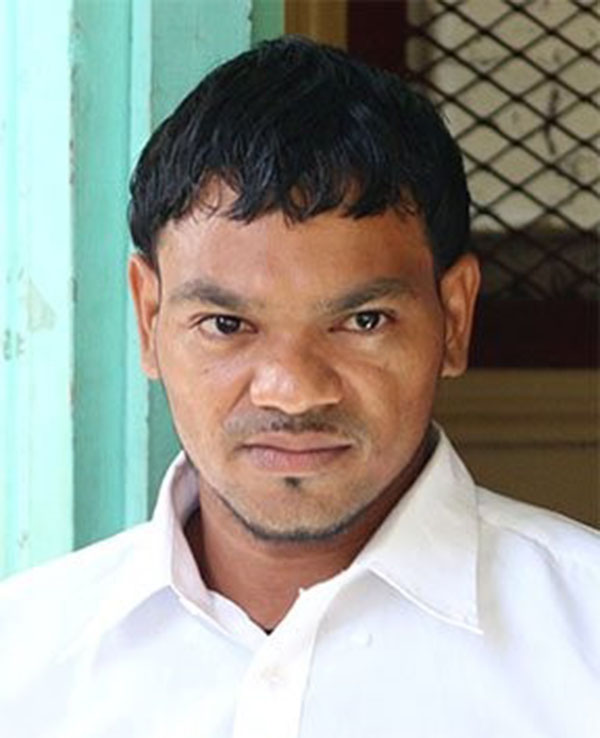The Guyana Court of Appeal yesterday affirmed a 23-year sentence imposed upon Calvin Ramcharran who in 2012 raped and viciously beat a woman during the act.
As opposed to contentions raised in his appeal, the appellate court found that the trial judge had given the jury sufficient directions in the case levelled against Ramcharran, thereby finding his grounds of appeal to have lacked merit.
By a majority of 11 to 1, a jury in 2015 found him guilty as charged of rape and assault causing actual bodily harm.
Trial judge Justice Jo-Ann Barlow would then go on to sentence Ramcharran to 23 years for the rape and three years for the physical assault. She ordered that the sentences be served concurrently.
Through his attorneys Nigel Hughes and Ronald Daniels, Ramcharran (the Appellant) contended that the trial judge erred in not withdrawing the case from the jury on grounds of “poor identification.”
In her presentation of the court’s ruling, however, acting Chancellor Yonette Cummings-Edwards said that the case called for recognition as opposed to identification, as the virtual complainant (VC) had testified to previously knowing Ramcharran.
Recognizing, however, that genuine mistakes can nonetheless be made where persons are known to each other, the appellate court said it found that the trial judge had gone on to direct the jury on how it needed to treat with such evidence and all the caution that needed to be attached thereto.
Counsel for the appellant had argued that because of poor identification the trial judge ought to have withdrawn the case from the jury.
Prosecutor Dionne McCammon had, however, argued that this was not automatic and that there had been no record of a no-case submission ever having been made by the attorney who represented the convict at trial.
The appellate court endorsed the prosecution’s argument that a weak identification does not automatically and by itself result in a judge withdrawing a case from the jury, especially where adequate directions on how to consider such evidence is given by the trial judge.
The court then went on to address the ground of appeal of intoxication.
The appellate court said that the story of an intoxicated complainant is not to be automatically discredited, especially where it could be established that the person was not impaired or void of reason.
Referencing the evidence, the Chancellor said the VC had testified to having consumed about four stag beers before the assault which she, the VC said did not hinder her ability to not only recognize who had assaulted her, but said that while the scene was somewhat dark, she recognized Ramcharran’s voice which she was also familiar.
The appellate court noted that these were all factors put to the jury by the trial judge for its consideration and sound warnings and guidance given on how it needed to properly assess that bit of evidence.
The final ground of appeal dealt with by the court was Ramcharran’s complaint that his defence of having an alibi had not been adequately put to the jury.
To this the Chancellor noted that based on the other evidence presented in the court, the trial judge did direct jurors that they had to be satisfied to the extent that they were sure it was Ramcharran who had committed the offences.
On this point the appellate court said that the jury was rightly directed that Ramcharran did not have to prove his alibi, but that they instead needed to assess the case for the prosecution with which the burden of proof rests, to disprove that there was no alibi.
Chancellor Cummings-Edwards said that the trial judge had rightly instructed that Ramcharran had nothing to prove, but rather the prosecution, and that where there was evidence of equal weight, that favouring the accused had to be drawn
Finding the trial judge’s directions to have been adequate, the appellate court said that all Ramcharran’s grounds of appeal failed.
The court then turned its attention to his complaint about the sentence imposed being too severe. The Chancellor, however, noted that this was not the case, especially when one considers that the maximum penalty for rape is life-imprisonment and five years for assault causing actual bodily harm.
In both instances the appellate court underscored that the trial judge had imposed below the maximum, even ordering that they be concurrently served.
The Chancellor said that given requirements of modern sentencing guidelines, however, the only shortcoming found on the part of the trial judge was that there was nothing indicating how she had arrived at the sentences.
Given the aggravating factors, however, especially the beating which the VC suffered during the sexual assault, the appellate court said that the sentences imposed were just.
Ramcharran was then informed that his appeal was being dismissed and his sentences affirmed.
The appeal was heard by the Chancellor and Justices of Appeal Rishi Persaud and Dawn Gregory.
The charges against Ramcharran, stated that on July 22, 2012, at Soesdyke, East Bank Demerara, he engaged in sexual penetration of the young woman without her consent. Additionally, he was convicted of a charge that on the same day, during the rape, he assaulted her so as to cause actual bodily harm.
The state’s case was that the victim had gone to a dance with friends and was making her way to use the washroom when she was confronted by Ramcharran, who enquired from her whether she was “doing business.”
Trial prosecutor Diana Kaulesar, who led the state’s case, had said that the young woman responded in the negative, at which point the convict grabbed her by the hand, after which a fight ensued between them. The court had been told during the trial that Ramcharran then began hitting the victim repeatedly to the head with a bottle before pulling her to the back of an unfinished structure even as she continued to resist him.
The court had heard that it was at this point that the convict choked and punched the victim in her face as he raped her. The state’s case also advanced that after the assault, Ramcharran offered the woman $65,000 and directed her to meet him at a car on the road. However, the young woman, who was stripped of her blouse by the convict, later sought assistance from other persons to leave the scene to seek medical attention as she was in and out of consciousness.
Both Ramcharran and the virtual complainant were 20 years old at the time.









